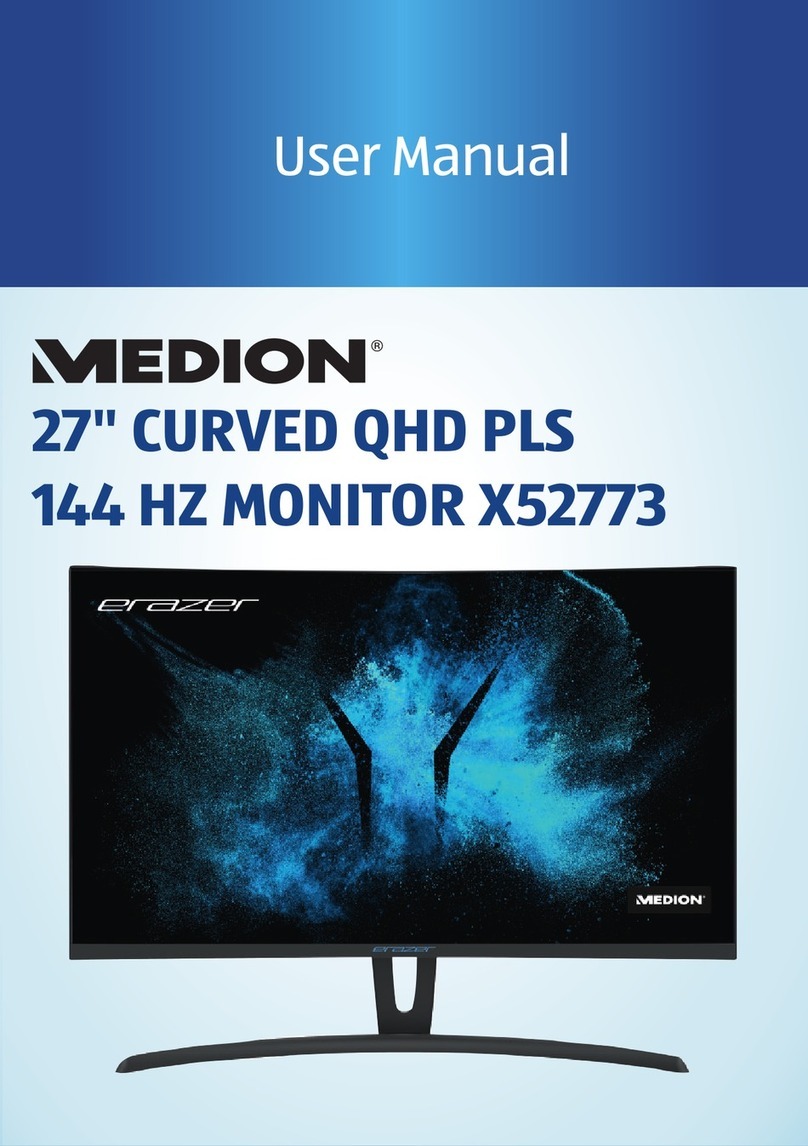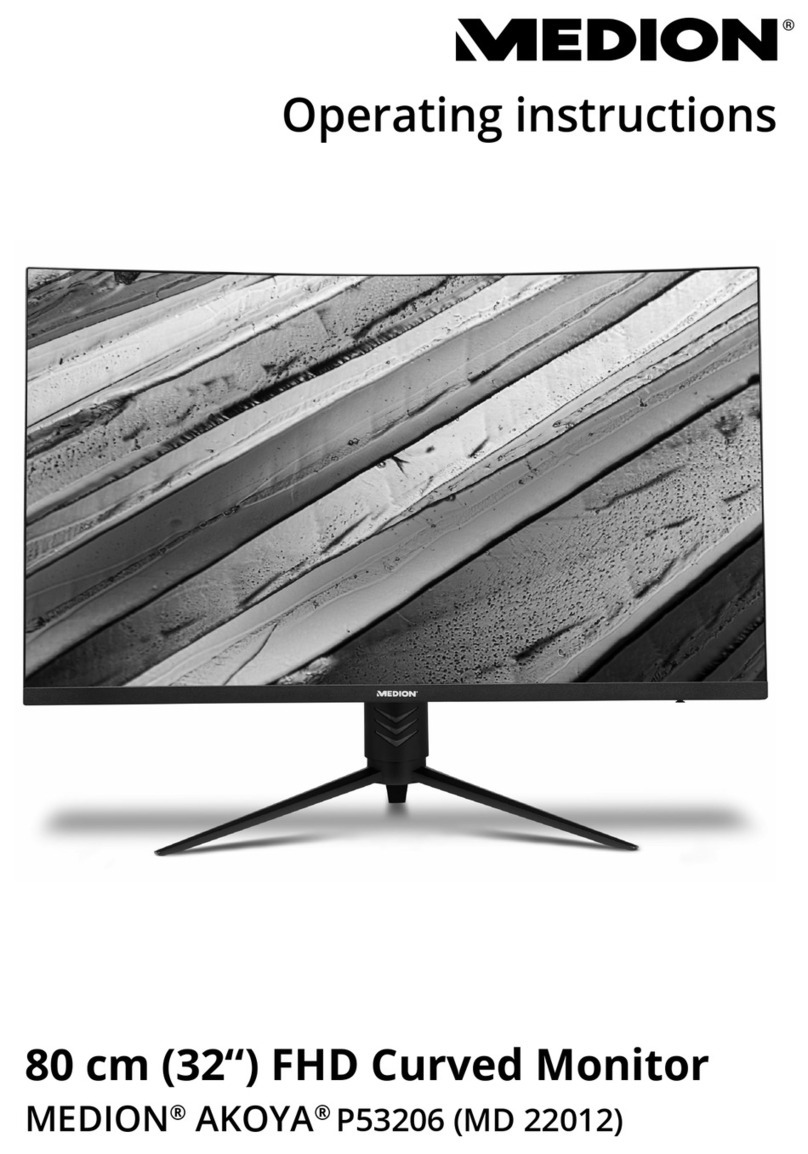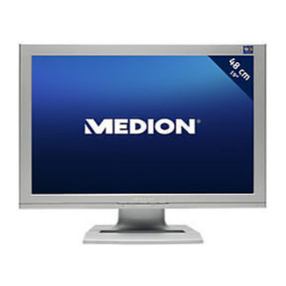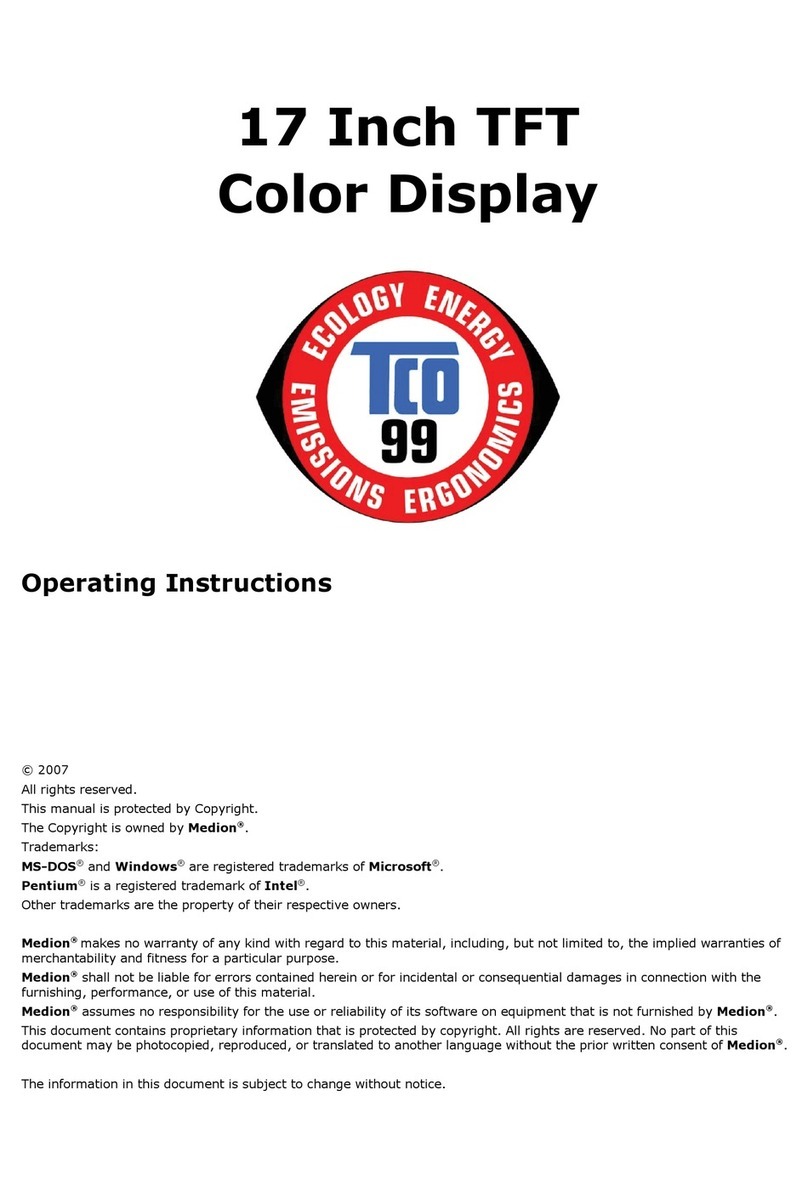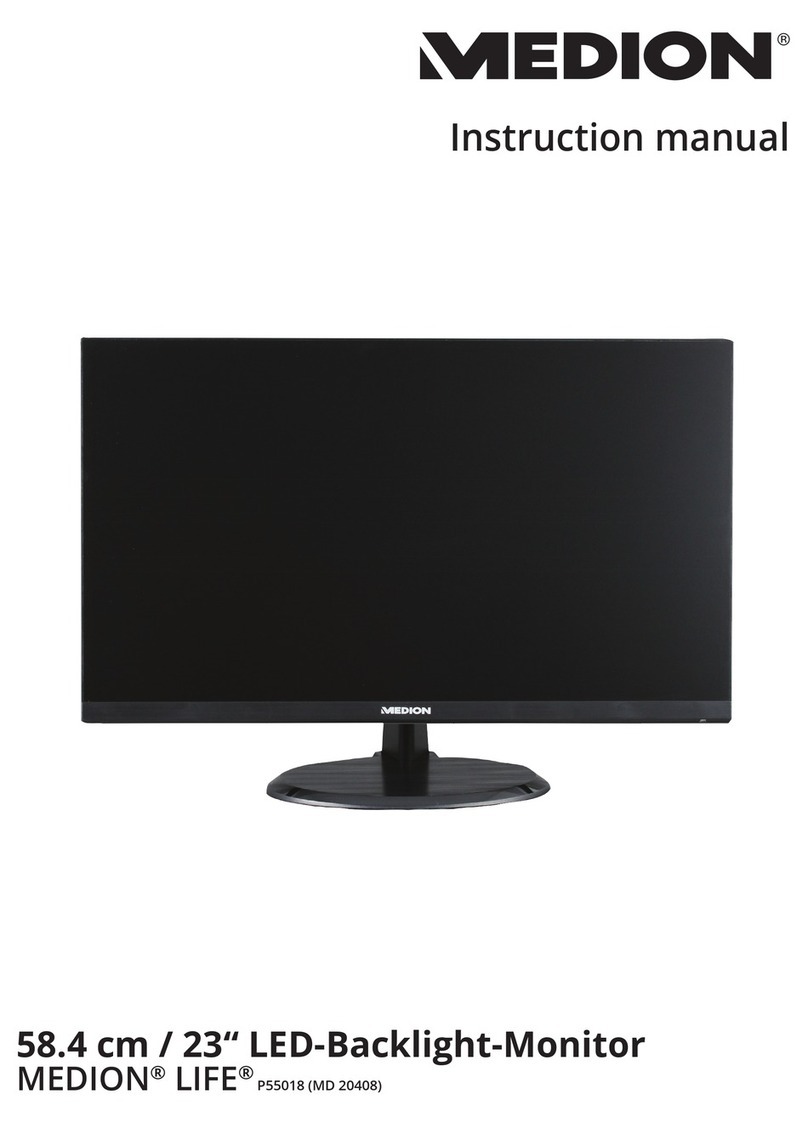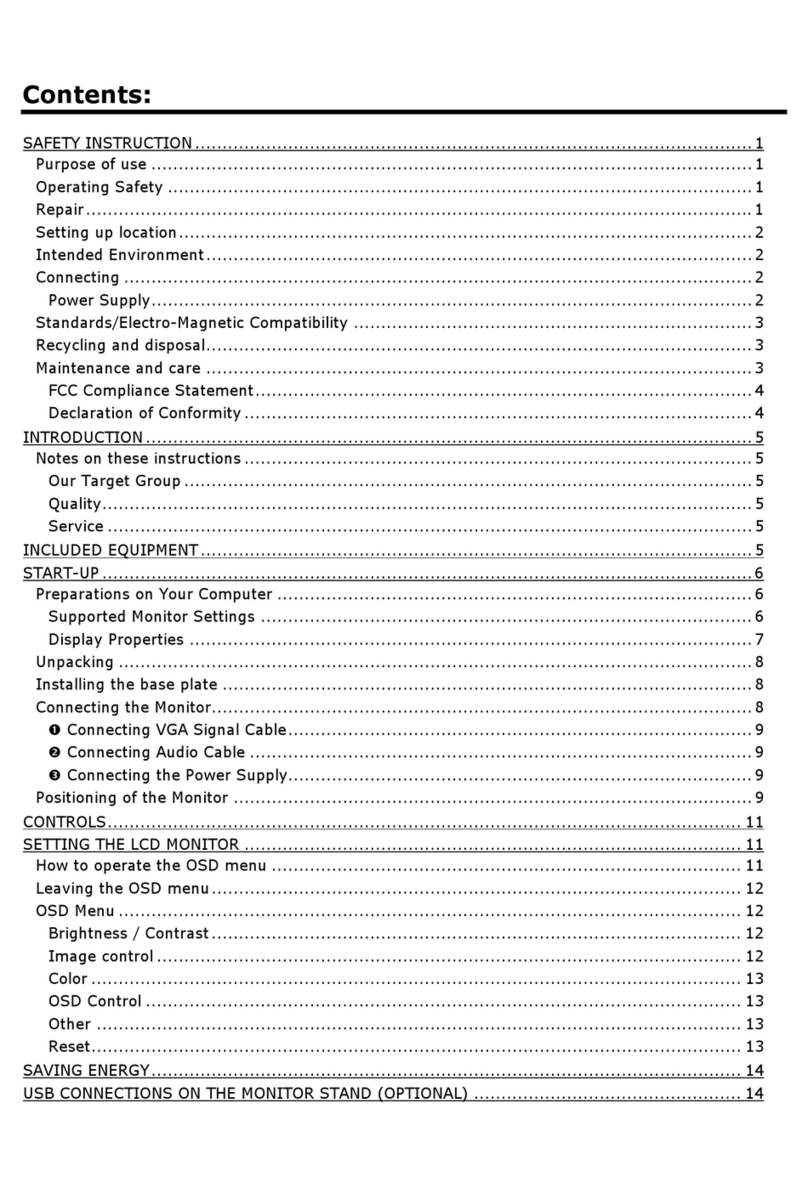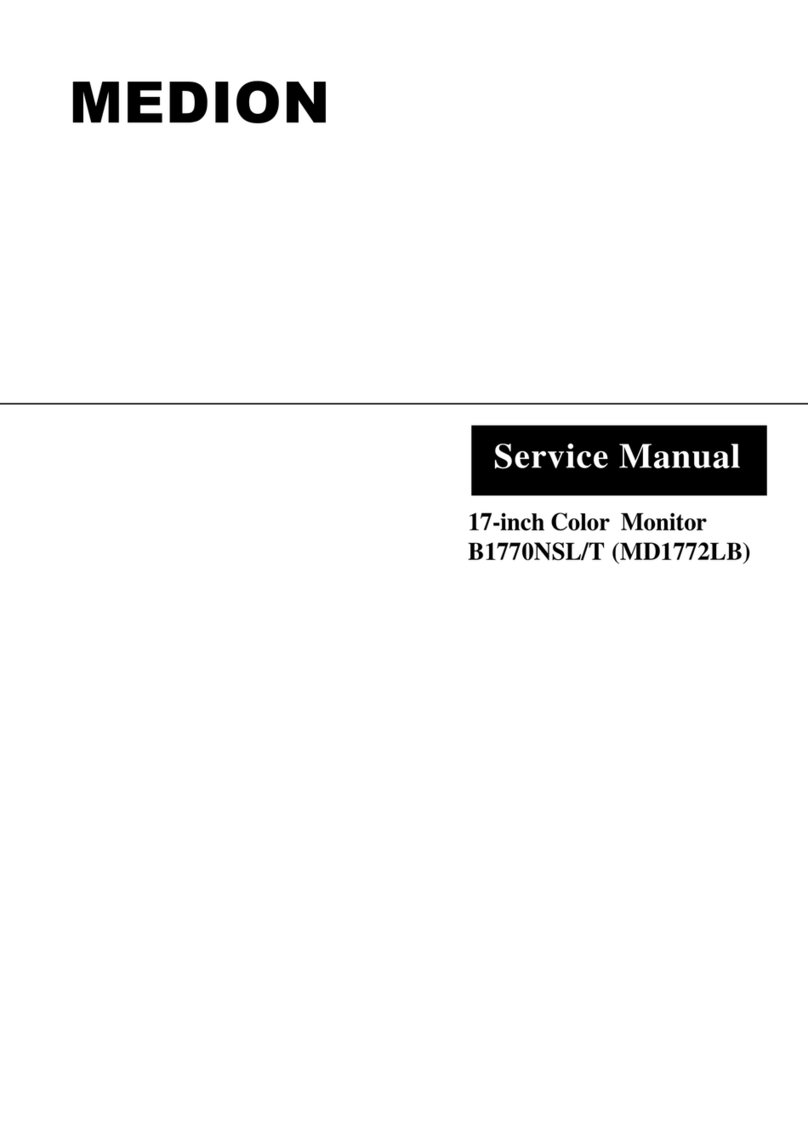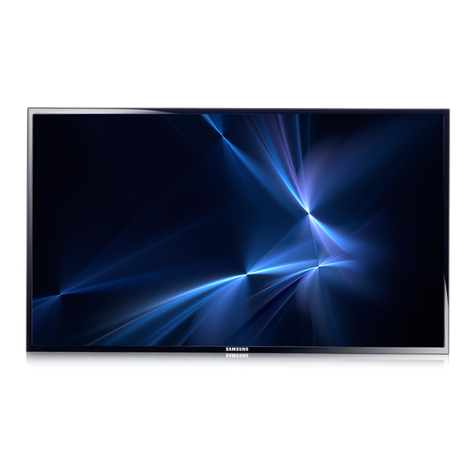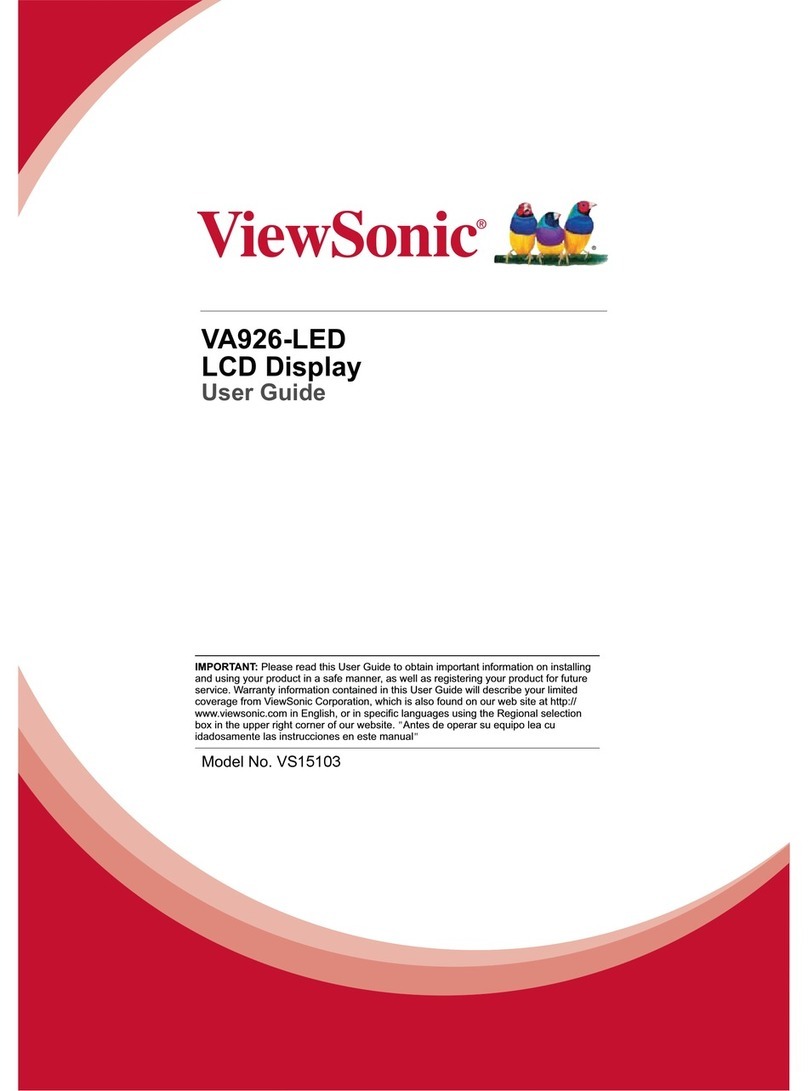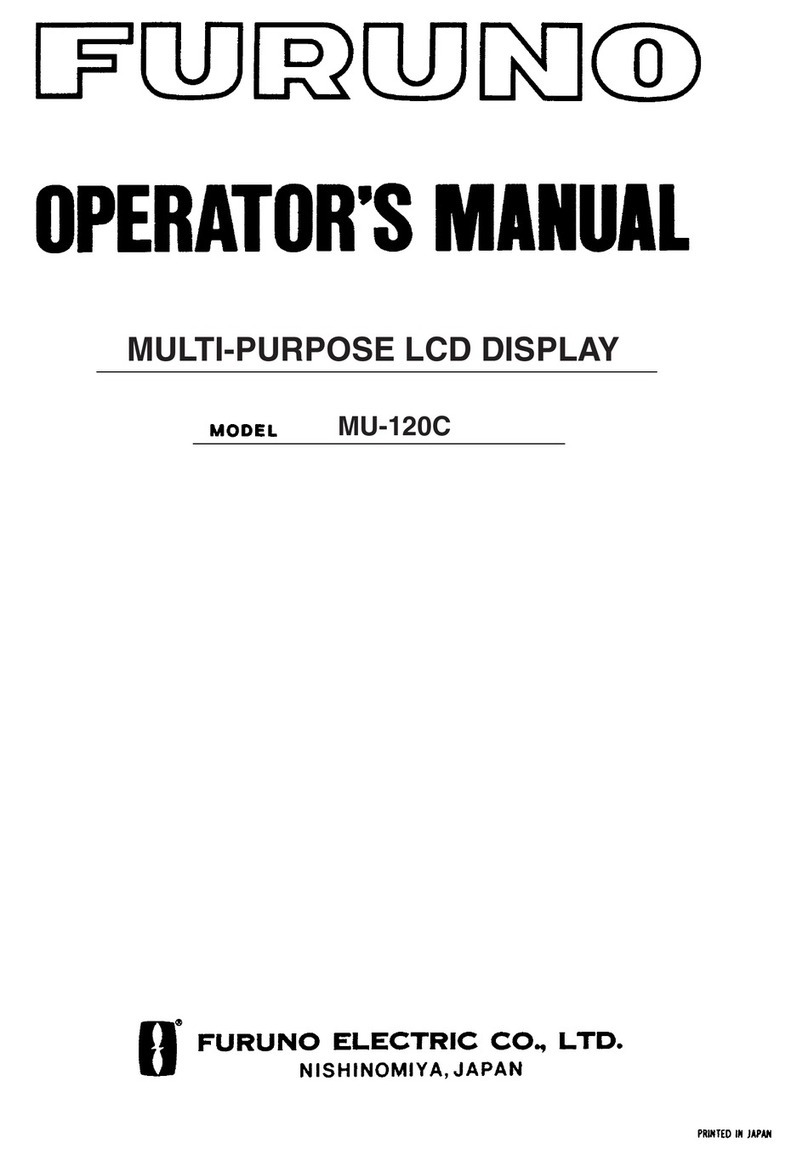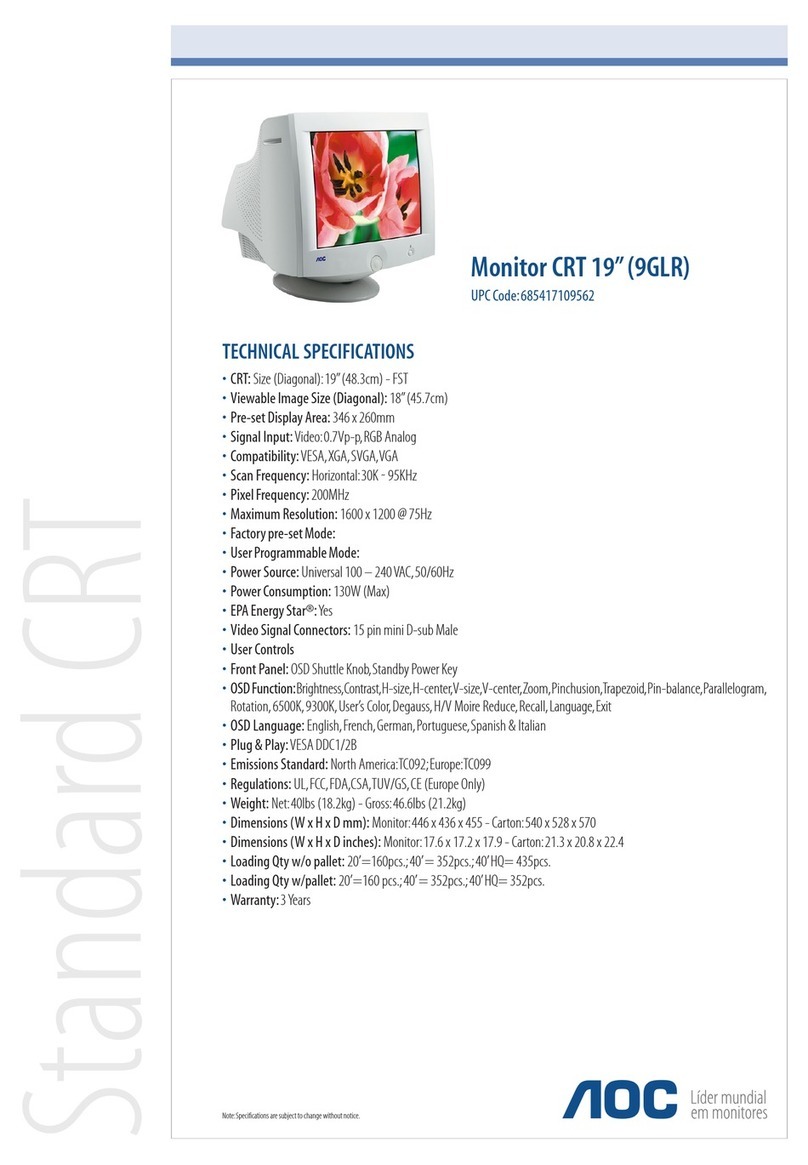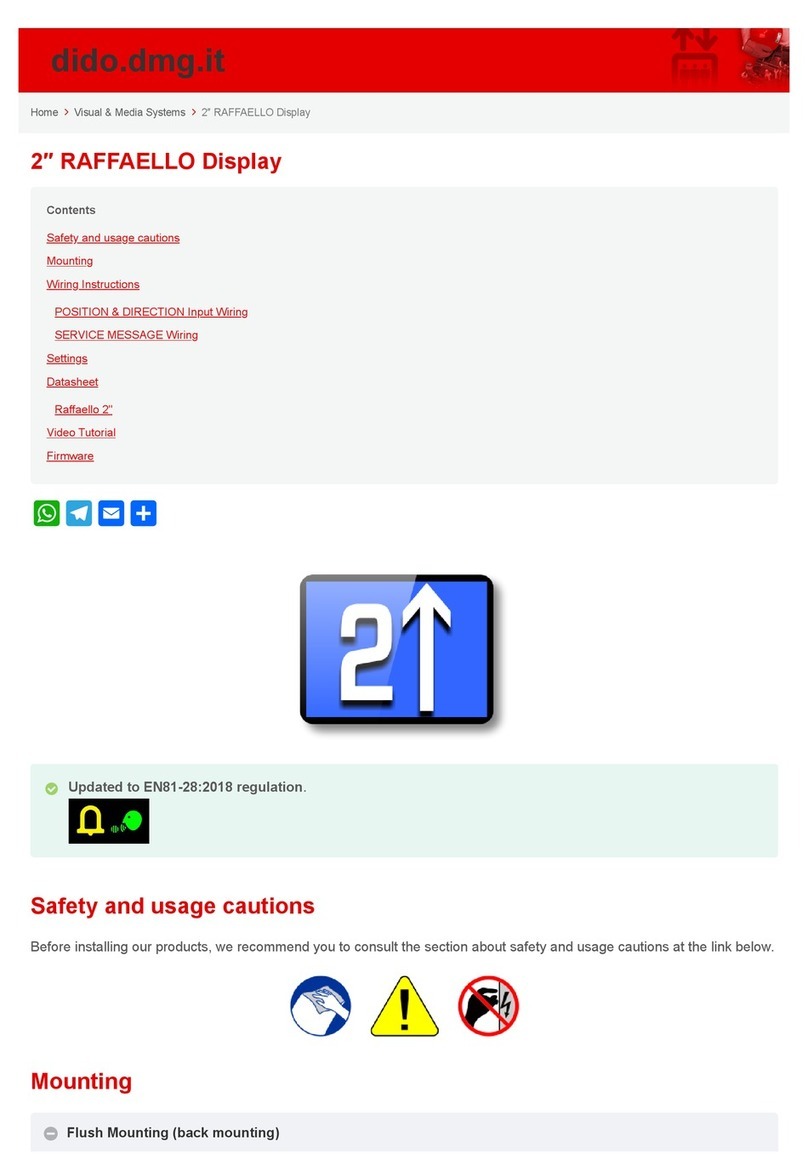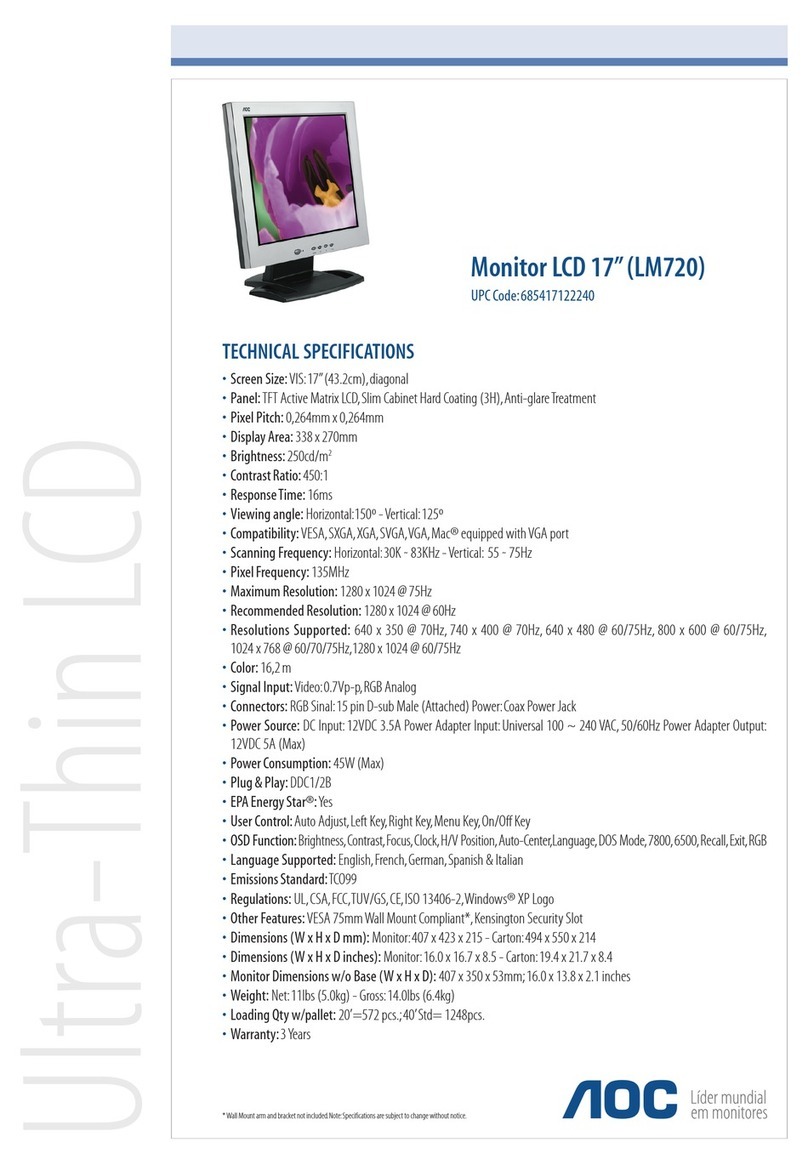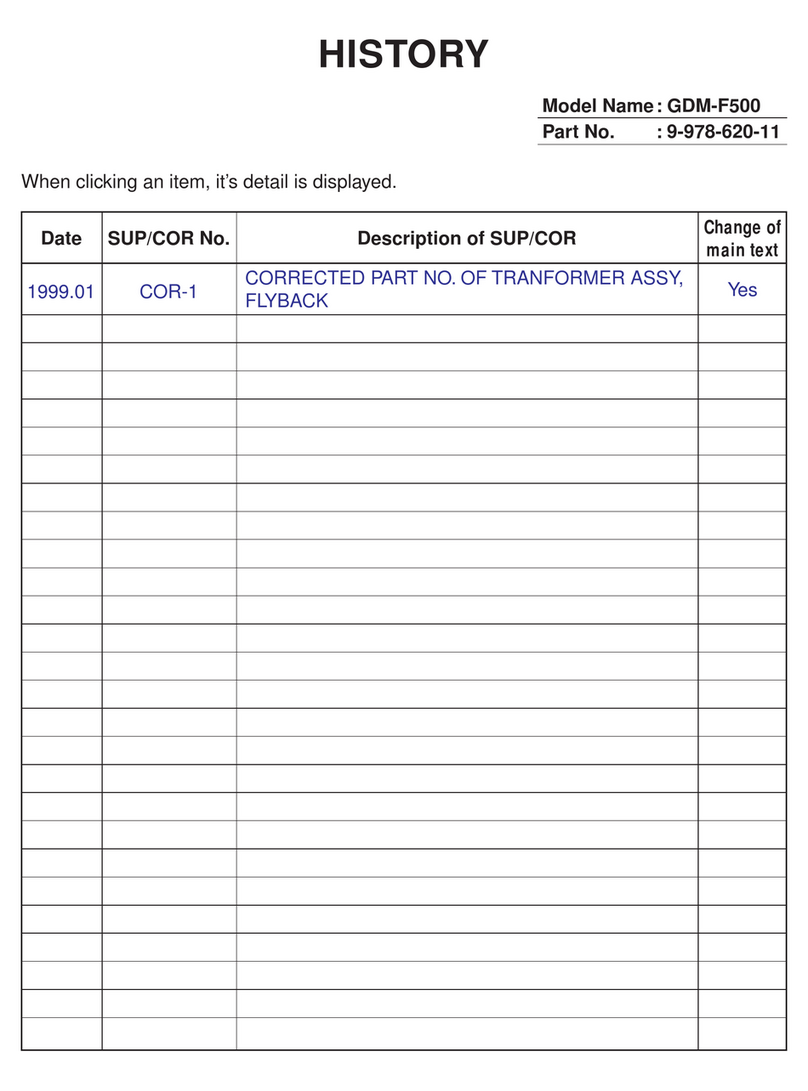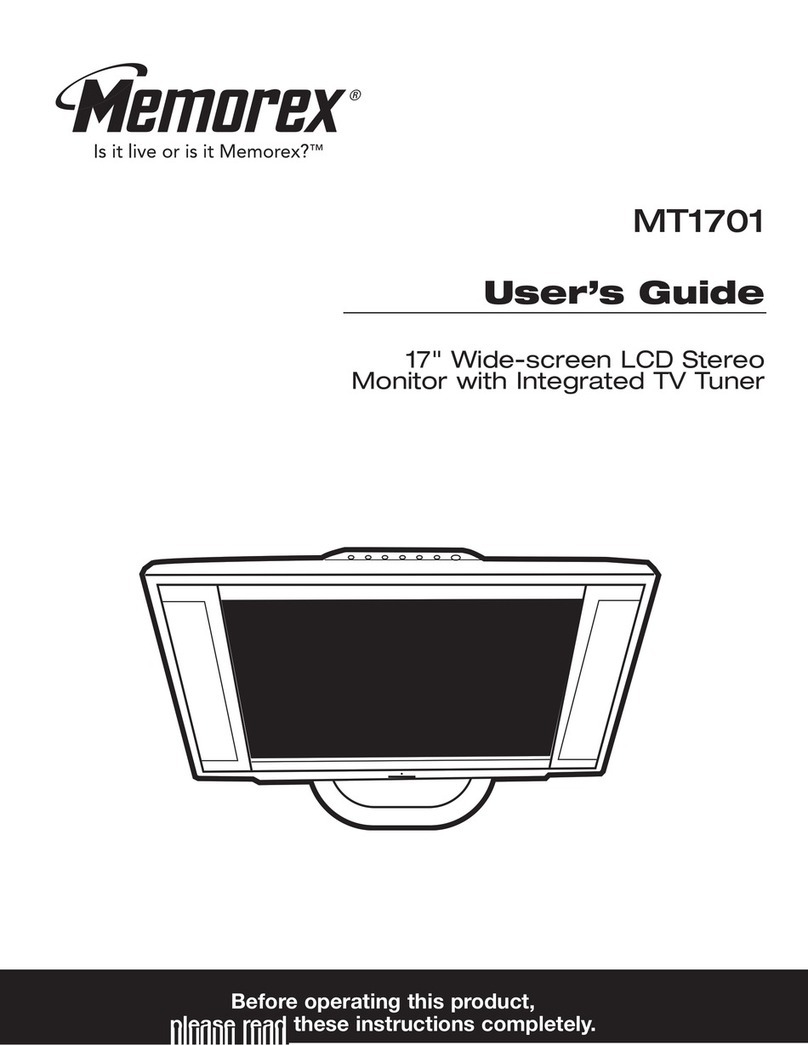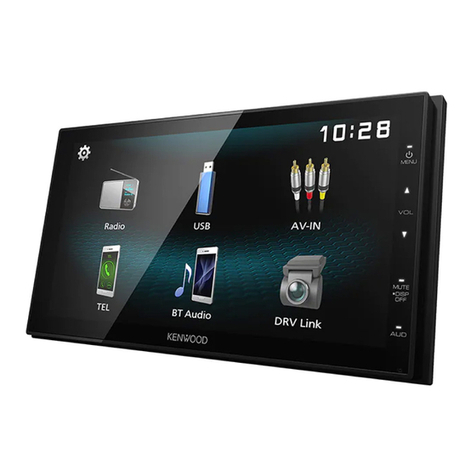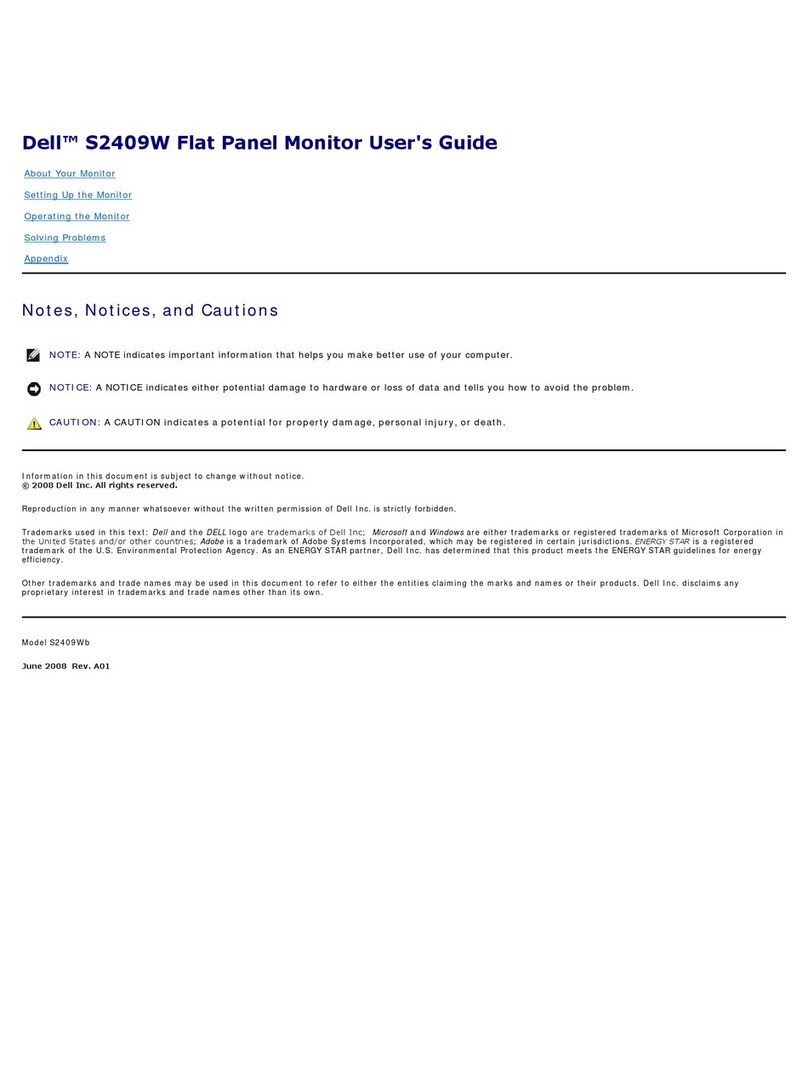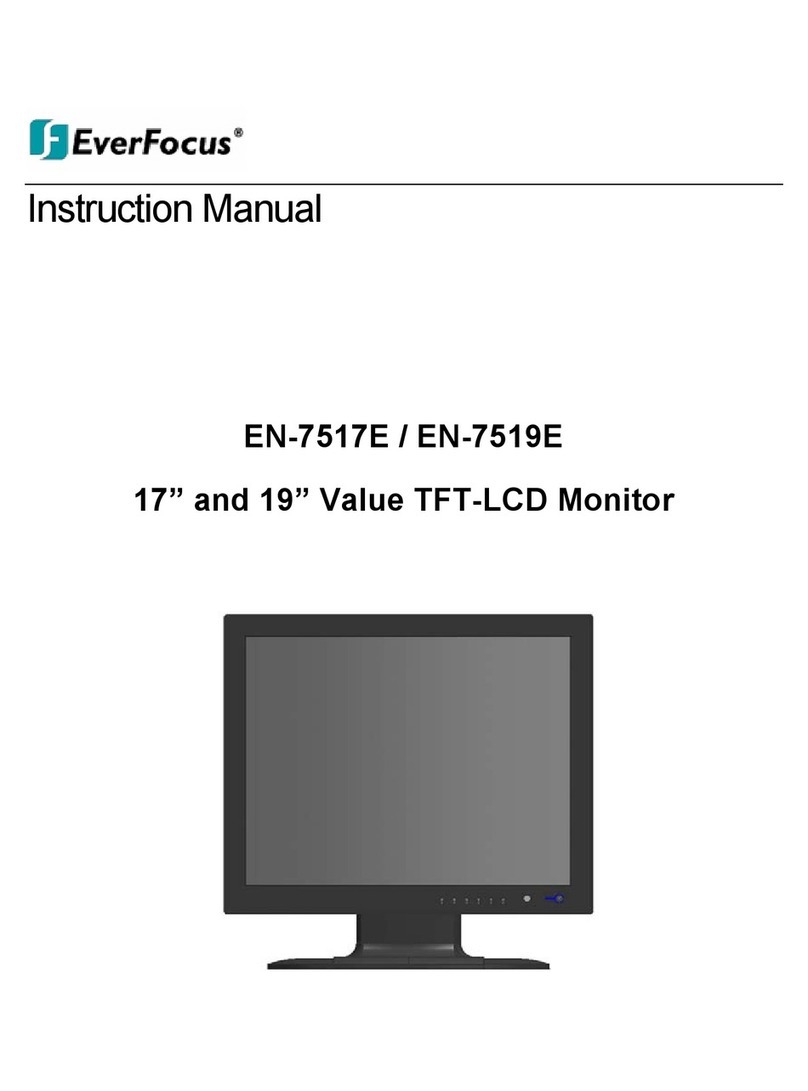
S
SA
AF
FE
ET
TY
Y
A
AN
ND
D
P
PR
RE
EC
CA
AU
UT
TI
IO
ON
NS
S
2
ENVIRONMENTAL CONDITIONS
•The LCD monitor can be operated at an ambient temperatures of between +41°F and +95°F
(5° C to 35° C) and at a relative humidity of between 20% and 80% (without condensation).
•When switched off, the monitor can be stored at between 14°F and +140°F (-10° C - +60° C), up
to the maximum height of 39,000 ft (12,000 m) above sea level at a relative humidity of between
20% and 80% (without condensation).
•After transporting your LCD monitor please wait until it has assumed the ambient temperature
before connecting and switching it on. Extremely high variations in the temperature or humid-
ity may result in condensation forming on the inside of the LCD monitor which could cause an
electrical short-circuit.
CONNECTING
Observe the following instructions to connect your LCD monitor properly:
POWER SUPPLY
•Do not open the housing of the mains (power supply). An open housing presents a le-
thal hazard from electrical shock. There are no parts inside to be cleaned or serviced.
•Operate your LCD monitor using only grounded sockets with AC 100-240V~/ 50-60 Hz. If you are
not sure about the power supply at your location, check with your power company.
•Use only the power supply and power connection cable provided.
•For additional safety we recommend use of an excessive voltage protection device to protect
your LCD monitor from damage resulting from voltage surges or lightning.
•To interrupt the LCD monitor from the power supply, disconnect the plug from the socket.
•The power socket must be in the vicinity of your LCD monitor and within reach of the power ca-
bles. DO NOT stretch the power cables tightly to reach a power socket.
•Carefully insert the VGA plug straight into the VGA socket of your computer with slight pres-
sure. Please pay attention that plug and socket exactly match. Due to the asymmetrical shape
there is only one way to fit the plug into. If the alignment fails don’t use excessive force. Exces-
sive force may damage some pins and destroy the plug may be destroyed. Please tighten both
screws of the plug by hand.
•You should lay the LCD Monitor cables in a manner that no one can trip or step on them.
•To avoid cable damage do not place any objects or furniture on the cable.
•You can adjust your LCD monitor a maximum of about 5° downward and 25° upward (see
page 8). If you attempt to force the monitor beyond these points, you may damage the monitor.
STANDARDS/ELECTRO-MAGNETIC COMPATIBILITY
Your monitor fulfils the requirements for electro-magnetic compatibility and electrical safety specified in the
following standards:
EN 55022, EN 55024, EN 60950, EN 61000-3-2, EN 61000-3-3
UL60950 / CAN CSA 22.2 No 60950, FCC
•When connecting ensure that Guidelines for Electro-Magnetic Compatibility (EMC) are observed.
•Provide an interval of at least one meter from high-frequency and magnetic sources of interference
(television sets, loudspeakers, mobile telephones, etc.) in order to avoid malfunctions and data loss.
ERGONOMICS
•This monitor complies with all relevant regulations such as DIN EN ISO 9241-3, DIN ENISO 9241-7 and
DIN EN ISO 9241-8.
•While working with screens you should take breaks periodically to avoid tension and fatigue.
•In order to save your eyes and to assure a convenient working area you should avoid glare, reflections and
strong contrasts on the screen.

